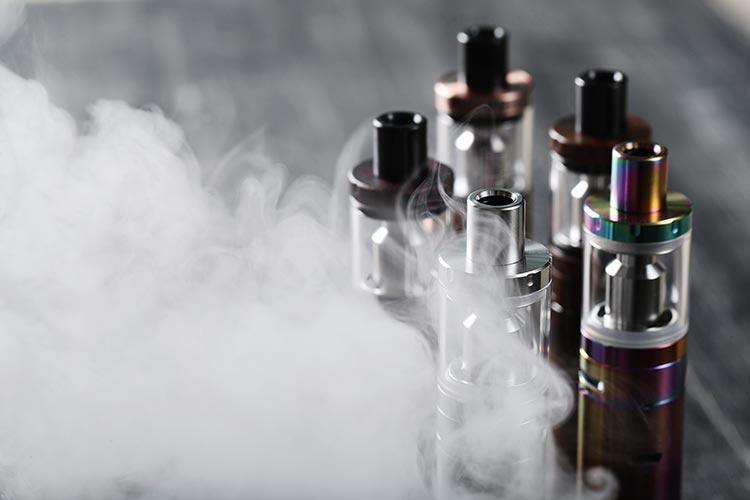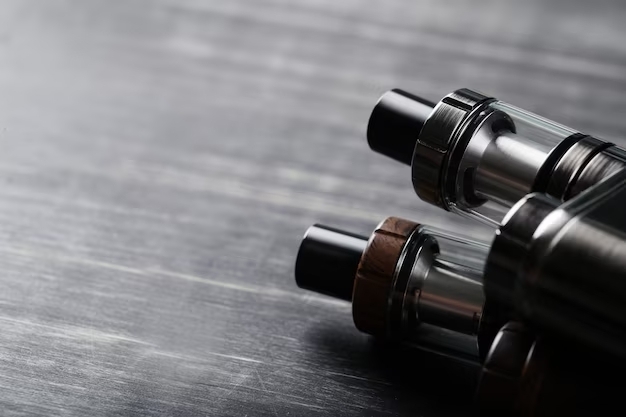If you’re a cannabis fan, you’re probably familiar with THC, the cannabinoid responsible for the cannabis plant’s distinctive euphoric “high,” among other effects. And one of the newer ways to access it is through a device known as a THC vape pen, a slim electronic battery-powered pen that creates a very special (and medically useful) cannabis experience. But THC is far from the only cannabinoid, and for that matter not all vape pens are alike.
If you’re interested in how to vape THC but aren’t sure where to begin, you’ve come to the right place.
In today’s post, we’ll break down such questions as:
- What’s a THC vape pen? Are there other kinds of vapes?
- How do cannabinoids work with our bodies?
- What’s the difference between THC and CBD?
- Are there different vape pens for THC and CBD?
…and others still. By the end, you should have the foundations on CBD vapes, THC vapes, pen types, and more!
The THC Vape Pen: What Is It and How Does It Work?
In some regards, it’s tough to beat the “old-fashioned” way of accessing cannabis: through a pipe or a pre-rolled joint. Both simple and effective, it delivers cannabinoids into your bloodstream within a few minutes at most. But there are some downsides, too. While smoking cannabis may offer benefits over smoking tobacco, it still introduces potentially irritating smoke into our airways and lungs. And if discretion is key, smoking is hardly your best option.
That’s where vaping comes in. While superficially similar to smoking, it presents several potential advantages. When we vape THC, we’re not actually burning any plant matter. Depending on the type of device, it heats a carefully refined cannabis concentrate or extract to the temperature at which the volatile compounds—cannabinoids such as THC and CBD and flavorful terpenes—are released as a cool mist.
Vaporizers often take the form of a “vape pen,” a thin, compact wand that includes a vape battery and a concentrated liquid such as cannabis distillate packaged in a cartridge. Small, efficient, portable and rechargeable, these are the most common type of vape you’re likely to encounter.
There are other types of vaporizers, too. Some work with ground flower, while others allow you to vape cannabis concentrates, or “dab.” But in essence, they all do the same thing: allow you to vaporize and inhale cannabis without introducing potentially irritating smoke into your lungs.
So…what about CBD? Can you vape that too? Now that we’ve talked a little about the devices, now’s a great opportunity to investigate exactly what it is you’re inhaling when you vape THC, CBD, or any other cannabinoids for that matter. Let’s kick it off by clarifying an important question about what’s in the cannabis plant (and why it’s such a big deal).

What’s the Difference Between THC and CBD? Introduction to the Cannabinoids
As we mentioned earlier, THC is a cannabinoid, a type of plant compound that some people characterize as the “major active ingredient” in the cannabis plant. Other cannabinoids include CBD, CBG, and CBN, and belong to a family with over one hundred cannabinoids. No matter the specific type, they all interface with our bodies through a network called the endocannabinoid system (ECS). Though only identified in the past several decades, the ECS is believed to be one of our body’s most important regulatory networks. If you’re curious about this crucial bodily system, you can learn more about it in this introductory article.
In the ECS, THC binds to specialized receptor cells known as CB1 and CB2. Notice the similarity between “cannabinoid” and “endocannabinoid”? That’s no accident; in a very real sense, those cannabinoids are “speaking the same language” as our own regulatory network. And in practice, this goes a long way towards explaining why cannabinoids have the potential to exert such impactful medical effects.
Along with being the chief contributor to the cannabis plant’s “high,” THC does a number of useful things. For medical users, the primary benefit of THC is its powerful pain-fighting effect, which it leverages by imparting natural anti-inflammatory properties at the site of an injury and using its characteristic euphoria to help modulate our experience of pain. THC can also offer relief from symptoms such as loss of appetite, anxiety and stress.
Then there’s CBD, sometimes known as “the second cannabinoid.” Though it lacks the intoxicating psychoactivity of THC—CBD is sometimes described as imparting a mildly stimulating cerebral “buzz”—CBD is associated with a surprising range of potential health benefits. Let’s run through a few of them.
CBD is also suggested as a remedy for anxiety and certain types of pain. Anxiety disorders are the most common mental health disorder in the United States, affecting nearly 20% of Americans each year. And a number of studies suggest that CBD may help. In one study, a CBD oil successfully treated some of the symptoms of PTSD, including anxiety. Another experiment simulated the common fear of public speaking and found that moderate doses of CBD induced a significant reduction in anxiety in test subjects. And still another study found that CBD can act like an all-natural antidepressant.
Then there’s chronic pain. Like anxiety, it’s a condition that affects a startling number of Americans. And just as with anxiety, clinical studies demonstrate that CBD can treat pain in a number of ways. Research has determined that CBD is a powerful anti-inflammatory, reducing pain at sites of injury by modulating the actions of local repair cells. CBD also partners with signaling mechanisms in the brain, enhancing the actions of receptor cells and dampening pain signals as they arrive.
So, now that you’re familiar with the common vape styles—and the cannabinoids we can access through them—let’s get to the central question: Is there a real difference between THC vape pens and CBD vape pens?
Vape Pens: What’s the Difference Between THC and CBD Pens?
In one sense, that question is easy to answer. We’ve discussed the differences and similarities in effect and benefit that you might experience from THC and CBD. The real question is: What kind of vape pen cartridge are you using?
Because cartridges are available in such a dizzying array of styles and formulations, there’s virtually no limit when it comes to the cannabinoid ratios, terpene profiles, or other characteristics you might like to dial in.
But looking at this question on a subtler level, there is one important difference. THC and CBD each become volatile at different temperatures, roughly 314°F for THC as opposed to 320°F – 356°F for CBD. If you’ve made the investment in a full-featured vaporizer, you can dial in the temperature to take advantage of this fact and enjoy a truly customized cannabis experience.
Even if you don’t own one of these devices, though, we believe that intent—that is, the health outcomes we’re seeking when we use cannabis—makes a big difference. We’ve seen the positive difference cannabis has made in countless customers’ lives, and we believe that choosing cannabinoids for their specific medical benefits has a real-life impact on their effectiveness. Because CBD is considered a non-intoxicating compound, having a dedicated CBD vape pen can be a strong support for those of us looking to address symptoms such as pain, anxiety, insomnia, or other conditions for daytime use or for symptoms that are better addressed with CBD.
Some consumers are concerned that the experience of vaping THC or CBD is less powerful than smoking it. While some users claim that smoking cannabis delivers a more intense high, at least one study suggests the opposite is true, at least for infrequent users.
It’s useful to remember that the point of vaping CBD isn’t typically to experience maximum psychoactivity. And as the above study suggests, compared with inhaling smoked cannabis, the bioavailability (or medical activity of cannabinoids) is actually higher when using a vape compared with smoking. For this reason and others, we still recommend that those primarily interested in the medicinal effects of CBD try vaping as a smoother, less potentially irritating alternative to smoking.
So next time you’re shopping for a vape pen, be sure to read the product’s label to see what ratio (if any) it offers between THC and CBD, and experiment with different ratios to find the one that works best for you.

CBD and THC Vape Pens: Explore Your Options with Green Goods
We hope today’s post has shed light on the topic of vaping THC, CBD, and other cannabinoids. Whether you use cannabis to relieve specific symptoms, to boost your overall physical and mental wellness, or as an all-natural way to unwind with friends and family—we’re committed to helping you get the most value and enjoyment from your cannabis purchases.
If you’re interested in trying a CBD or THC vape pen for yourself, we’d like to help! Start by finding your nearest Green Goods location to learn about the products available in your state. And if you have any other questions about CBD, THC, pen styles, or other cannabis-related topics, just ask! We’re always here to help.
Please note that qualifying conditions vary by state, and the information relating to qualifying conditions may not apply to cannabis patients in all states. Product availability also varies based on state program restrictions and rules, so the products discussed may not be available in all states. Be sure to check with your local Green Goods location about the products available in your state!
